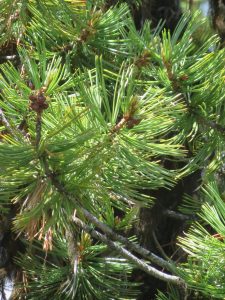Got a note from the folks at the National Parks Conservation Association about a climate change focused “mulitmedia extravaganza” to be held Saturday, April 26 at the O’Shaughnessy Center in Whitefish. Tickets are $5 at the door. Here’s the write-up, lifted shamelessly from their press release . . .
An Evening of Art, Music & Science, April 26, 2014
Stories from the Mountain, Songs From the Soul
Tales of Climate Change, Inspired by Glacier National Park
A year after Glacier National Park was established in 1910, University of Montana professor Morton Elrod lugged a large camera to a scenic point and snapped a photo of Jackson Glacier. An artist as well as a scientist, Elrod sold park images through his family postcard business.
In 2009 scientist Lisa McKeon photographed the exact same scene from the exact same location. Sideby-side, but separated by 98 years, the twoimagesreveal a striking truth of climate change — a great glacier nearly gone in less than a century. That stark contrast has inspired a new generation of artists to translate science back into art, bringing attention to the urgent issues of climate change.
Two of those artists will be in Whitefish on April 26 to join scientists and musicians for an evening of visual stories, reflection and knowledge about the real-world impacts of climate change caused by carbon pollution. These creative thinkers bring planetary climate change down to the human scale, prompting us to grapple with how our species and others can adapt to a powerful new reality. The multi-media extravaganza caps a day of gatherings in 14 Montana communities, including five in the Flathead, seeking Montana climate solutions.
| WHAT: |
Stories from the Mountain, Songs from the Soul |
| |
Tales of Climate Change, Inspired by Glacier National Park |
| WHERE: |
Whitefish, O’Shaughnessy Center, Tickets $5 at the door |
| WHEN: |
Saturday, April 26, 7:30 p.m. |
| WHO: |
Artists, scientists and musicians including:
- Dan Fagre, Research Ecologist, U.S. Geological Survey, West Glacier
- Lisa McKeon, Physical Scientist, U.S. Geological Survey, West Glacier
- Diane Burko, Painter, Philadelphia
- Joy von Wolffersdorff, Professor of Art, Northridge, California
- The Crown of the Continent Choir
- Left Side Brains, Youthful bluegrass
|
Earlier on April 26th, residents in five Flathead towns will spotlight Montana climate solutions through community discussions, music, and rallies. All events begin at noon.
BIGFORK: Climate and Community Gathering, Downtown Bigfork: Join your neighbors to discuss the issues, ask questions, explore solutions, and take action. Noon
COLUMBIA FALLS: Honk and Wave in Support of Climate Solutions, Highway 2 and Nucleus.
Rally for climate solutions. Bring signs to support climate solutions. Noon.
KALISPELL: Jamming for Climate Solutions, Depot Park Rally, featuringthe Tropical Montana Marimba Ensemble. Bring signs to support climate solutions. Noon.
PABLO: Roundtable Discussion with speakers, Salish Kootenai College, The Late Louie Caye Sr. Memorial Building. Lunch Provided. 12-3 p.m.
WHITEFISH: Dance a Jig, Honk and Wave for Climate Solutions, Corner of Spokane and 2nd Street, featuring the youthful bluegrass sounds of the Left Side Brains. Noon.
“Climate change is a big hairy challenge,” said Laura Behenna, coordinator of the Kalispell event. “We’re trying to make sense of the science through the most human of endeavors: art, music, sharing stories, talking with your neighbors. By meeting the climate challenge at a personal and community level, we can begin to find the abundant climate solutions available to us as Montanans.”
To learn more about specific events contact local coordinators:
Bigfork: Jeffrey Funk, 837-4208
Columbia Falls: Diane Taylor, 892-1640
Kalispell: Laura Behenna, 257-2116
Whitefish: Steve Thompson, 250-9810
Pablo: Kirwin Werner, 676-8988
For more information about An Evening of Art, Music & Science, contact:Michael Jamison, National Parks Conservation Association, 862-6722 Steve Thompson, Glacier Climate Action, 250-9810
Contact info for the scientists, artists and musicians is available by request.
Diane Burko is a painter and photographer based in Philadelphia. Her “Politics of Snow” project draws upon the Glacier repeat photography project and similar projects around the world. She is devoted to using her art to bring attention to the urgent issues of climate change.
Joy von Wolffersdorff is an art professor at California State University Northridge. Although her first love in art is drawing, she uses whatever medium she feels will most effectively express a given concept. She is currently focused on creating gathering places for scientists and artists who are working on climate change.
Craig Hodges directs the Crown of the Continent Choir, volunteers who sing for fun and perform for social justice, environmental stewardship, spiritual fulfillment and community service.
USGS scientists Dan Fagre and Lisa McKeon have created an exhibit, Losing a Legacy: A photographic story of disappearing glaciers, to showcase photographs from their Repeat Photography Project. The collection consists of historic glacier photographs paired with contemporary photographs, a juxtaposition that reveals dramatic reductions in glacier size. Since they began their rephotography efforts in 1997, over 100 photographs of 20 different glaciers have been repeated. Each summer they capture more images to add to their growing collection
